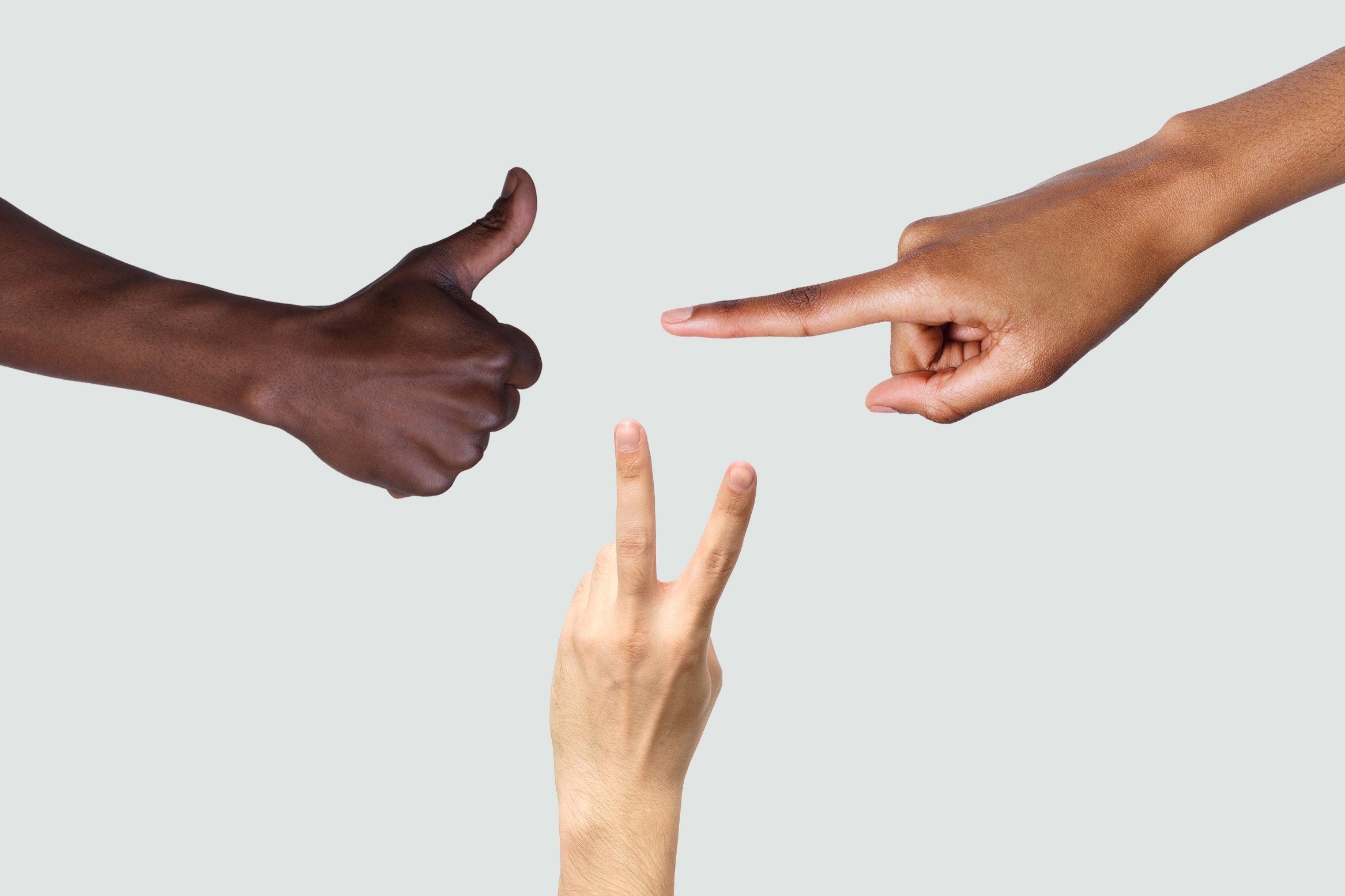
Exploring the Fascinating World of European Gestures
In the realm of interpersonal interactions, there exists a rich tapestry of expressions that transcend spoken language. These nuanced forms of communication hold profound implications for understanding social dynamics and interpersonal relationships. Each gesture carries its own narrative, influenced by historical contexts, regional customs, and collective experiences.
Throughout various locales, body movements serve as an integral facet of daily exchanges, often conveying emotions and intentions far beyond mere words. The vibrancy of these actions can illuminate underlying values and beliefs, reflecting the essence of communities and their traditions. Recognizing this complexity invites a deeper appreciation for the myriad ways individuals connect with one another.
This exploration delves into the various forms of non-verbal cues that characterize different societies. By examining the significance behind each movement, we can unveil the intricate layers of communication that define diverse populations. Ultimately, this journey reveals the power and depth inherent in gestures, fostering a greater respect for the differences that define our shared human experience.
The Role of Gestures in Communication
Non-verbal signals play a crucial part in how messages are conveyed and received. They enrich interactions by adding layers of expression and emotion that words alone may fail to depict. The way individuals use their bodies influences perceptions, enhances connections, and clarifies or sometimes complicates the intended communication.
Types of Non-Verbal Signals
Various forms of physical expressions can be identified, each serving distinct purposes in interpersonal exchanges. These forms can vary significantly across different environments and populations, often reflecting unique behavioral patterns.
|
Type |
Description |
|---|---|
|
Facial Expressions |
Convey emotions and reactions through facial movements. |
|
Postures |
Indicate openness, aggression, or relaxation depending on body alignment. |
|
Hand Movements |
Enhance verbal messages or signify concepts without words. |
|
Eye Contact |
Sustain attention and signal engagement or sincerity. |
Impact on Social Interactions
The influence of non-verbal communication is profound, often shaping social dynamics and interpersonal relationships. Awareness of these signals allows individuals to navigate complex interactions effectively, ensuring that their intents are clear and their messages resonate appropriately.
Cultural Variations in Nonverbal Signals
In diverse settings, the ways individuals communicate without spoken language can vary significantly, reflecting distinct societal norms and values. These silent forms of expression often carry rich implications that can lead to misunderstandings if not interpreted within their specific contexts. By examining these variations, one can appreciate how nonverbal cues serve as a bridge between personal interactions and the broader societal framework.
Facial expressions, for instance, can convey a multitude of emotions differently depending on the region. While a smile is generally seen as a sign of friendliness in many areas, in certain cultures, it may express discomfort or nervousness. This illustrates how the same expression can hold different connotations based on local customs.
Body language is another crucial element in this realm. Certain postures may signify confidence in one context, while in another, they could be perceived as arrogance or disrespect. The interpretations of space and proximity during conversations also highlight the importance of understanding these regional nuances.
Additionally, what may be considered an appropriate gesture in one locale could be offensive in another. For example, the thumbs-up sign is perceived positively in many Western nations, yet it carries negative undertones in some Middle Eastern cultures. Recognizing these discrepancies is vital for effective communication and fostering positive interactions across different backgrounds.
Common Gestures Across European Countries
Within the diverse realm of communication, specific movements hold particular importance across various regions. These physical expressions often convey feelings, intentions, or social cues that can differ significantly between cultures. Recognizing these nuances enhances interpersonal interactions and fosters mutual respect among individuals from different backgrounds.
Waving and Hand Signals
A simple wave can express greetings or farewells across many lands. However, the context and manner in which one waves can vastly differ. In some locales, a gentle wave signifies friendliness, while in others, a more enthusiastic gesture may be typical. Similarly, the thumbs up is interpreted positively in several nations, but caution is advisable as it may carry negative connotations in certain cultures.
Facial Expressions and Proximity
Facial gestures play a crucial role in communication as well. A smile is universally appreciated, yet the intensity and conditions under which it’s offered can vary greatly. Personal space also influences how individuals express themselves; in some areas, closer proximity fosters intimacy and warmth, while in others, a wider berth is preferred. Understanding these practices can significantly reduce misinterpretations in social exchanges.
Understanding the Impact of Context
The interpretation of movements and signals is greatly influenced by the surrounding circumstances in which they occur. Every action carries different implications depending on various elements such as location, societal norms, relationships between individuals, and even the emotional state of the performers. This complexity enriches interactions but also poses challenges in ensuring that the intended message is accurately conveyed.
Key Elements Influencing Interpretation
-
Location: The physical setting can alter the perceived intent behind a gesture. For example, what might be humorous in a casual setting could be deemed inappropriate in a formal environment.
-
Relationships: The rapport between individuals plays a crucial role. Familiarity can allow for more relaxed expressions, while formality may stiffen movements and reduce spontaneity.
-
Social Norms: Each community has unique guidelines governing gestures. A movement accepted in one group might be misinterpreted in another, leading to misunderstandings.
-
Emotional State: A person’s mood can affect how a gesture is made and received. Stress or joy can intensify or soften the intended message, respectively.
Challenges of Misinterpretation
-
Inadvertent Offense: A benign signal might provoke an emotional response if interpreted incorrectly.
-
Cultural Clashes: Variations in gesture meaning can lead to friction in interactions between people from diverse backgrounds.
-
Ambiguity: Without sufficient context, the action may be viewed through a lens of personal bias, leading to confusion.
Recognizing these factors is essential for fostering clear communication and avoiding potential conflicts. Delving into the nuances of environment and relationship dynamics can significantly enhance interpersonal exchanges, paving the way for more meaningful connections.
Misinterpretations and Their Consequences
Misunderstandings related to communication can lead to significant challenges in interpersonal exchanges. When a gesture or signal is perceived differently than intended, it may yield confusion or conflict, affecting relationships on both personal and professional levels.
Impact on Relationships
When individuals misinterpret signals, it can create barriers to effective interaction. For instance, a simple hand gesture meant to convey friendliness might be seen as offensive in another context. Such discrepancies can foster feelings of distrust and resentment, ultimately harming connections.
Consequences in Business
In the professional realm, the stakes can be even higher. Misreading a client’s body language or a colleague’s signal may result in lost opportunities or failed negotiations. Awareness of the potential for misinterpretation is crucial, as an incorrect assumption can derail projects and impact overall workplace harmony.
To mitigate these risks, individuals should cultivate an awareness of diverse communicative practices, taking time to clarify intentions and meanings before jumping to conclusions. Recognizing the nuances involved in non-verbal interactions aids in building trust and enhancing collaboration.
The Evolution of Gestural Language
The development of non-verbal communication has undergone remarkable transformations throughout history. From primitive forms of expression to sophisticated systems that convey complex ideas, body language has played a crucial role in interactions among people. This section explores the journey of these expressions, highlighting their adaptability and the profound impact they carry across different societies.
Initially, gestures served as basic signals for survival, allowing individuals to convey essential information about their environment. Over time, these simple motions evolved into more nuanced forms, reflecting the complexity of human relationships and the need for a deeper connection. As communities grew and diversified, the variety of signs and movements expanded, leading to the creation of localized dialects that enriched interpersonal communication.
In contemporary society, the role of body language has acquired even greater importance. With globalization, certain motions have transcended borders, while others remain deeply rooted in local traditions. This dynamic interplay between universal signals and culturally specific expressions showcases the richness of human interaction, inviting us to explore the intricate tapestry of our shared experiences.
Questions and answers: European gestures
What are some common gestures in European cultures and what do they mean?
Common gestures across European cultures include a variety of hand signals and body language cues. For example, in Italy, the famous “finger purse” gesture is often used to express disbelief or ask, “What do you want?” In France, shrugging one’s shoulders can indicate indifference or a lack of knowledge about something. In the UK, the “peace” sign, with the palm facing outward, symbolizes peace or goodwill, whereas if the palm is facing inward, it can be seen as an offensive gesture. Understanding these gestures is crucial as they reflect social norms and cultural values which may vary significantly from one country to another.
How do gestures vary between European countries?
Gestures can vary widely between European countries due to historical, social, and linguistic influences. For example, the “OK” hand gesture is positive in many places, but in parts of Greece and Turkey, it’s considered offensive. The British might use a thumbs-up as a sign of approval, while in some Slavic cultures, the same gesture can be interpreted as rude. This illustrates how gestures are deeply rooted in cultural context, making it essential for travelers or expatriates to familiarize themselves with local customs to avoid misunderstandings.
Are there any gestures that are considered universally accepted across Europe?
While many gestures have cultural significance and can be interpreted differently, some gestures are more universally accepted across Europe. For instance, clapping hands to indicate applause or appreciation is widely recognized. Nodding one’s head to signify agreement or understanding is also a common gesture throughout Europe. The facial expression of smiling, while not a hand gesture, also tends to convey friendliness and politeness across various cultures. Nonetheless, even these gestures may have subtle variations in interpretation based on local customs.
Why is it important to understand gestures in different European cultures?
Understanding gestures in different European cultures is crucial for effective communication and fostering positive interactions. Gestures can carry significant cultural weight and may express emotions, intentions, or social norms. Misinterpreting a gesture could lead to offense or misunderstanding, which can hinder personal and professional relationships. Additionally, being aware of these non-verbal cues can help in navigating social situations, enhancing one’s ability to integrate and connect with locals in a meaningful way. Ultimately, knowledge of cultural gestures enriches one’s travel experiences and promotes cultural sensitivity.
Can you explain some gestures that may be misinterpreted when traveling across Europe?
There are several gestures that travelers should be cautious about, as they can easily be misinterpreted in different European cultures. For instance, the “thumbs up” sign is generally positive in many Western countries, but in parts of the Middle East and Greece, it is considered offensive. Similarly, in Spain, placing your hands on your hips can be seen as confrontational, while in other nations it may simply suggest a relaxed posture. Additionally, the “V” sign can be seen as a gesture of peace in most cultures, but with the palm facing inward, it is offensive in British and Australian contexts. Recognizing these differences can help avoid social faux pas and enhance one’s travel experience.
What does giving someone the middle finger symbolize in various cultures?
Giving someone the middle finger is considered an obscene gesture in many cultures. In countries like the United States and the UK, it is a direct insult indicating strong disrespect or anger. In some European cultures, such as in France and Belgium, the gesture is also seen as rude and offensive. The middle finger is used to signify a vulgar insult across various contexts, and its meaning remains largely consistent in representing disdain or contempt.
How is the index finger used in different European hand gestures?
The index finger is involved in numerous European hand gestures with varying meanings. For example, in many Southern European countries, the index finger might be used to signal “come here” or to emphasize a point in conversation. In Italy, the gesture of making a fist with the index finger extended can be used to signify annoyance or a desire to speak more directly. The index finger’s use can vary widely, making it essential to understand the specific context of each gesture.
What does the “V for Victory” gesture mean in different European countries?
The “V for Victory” gesture, made by raising the index and middle fingers in a V shape, has different connotations depending on the context. In the UK and Australia, it is often associated with peace or victory, especially if the palm faces outward. However, in some European countries, such as France and Belgium, making this gesture with the palm facing inward can be seen as an insulting gesture. Understanding the local interpretation of this sign is important to avoid misunderstandings.
How are gestures involving the thumb and forefinger interpreted across Europe?
Gestures involving the thumb and forefinger, such as making a circle or “OK” sign, are interpreted differently across Europe. In some countries, such as Italy and Spain, this gesture can simply mean “all right” or approval. However, in other parts of Europe, including Greece and Turkey, the same gesture can be considered an obscene sign or insult. It’s crucial to be aware of regional variations to ensure that gestures are used appropriately and respectfully.
What is the significance of the “forearm jerk” gesture in European cultures?
The “forearm jerk” gesture, where you jerk your forearm as you slap the bicep with your other hand, is often used in Southern European countries. It can indicate something like “I don’t care” or “whatever” in casual contexts. This gesture can be considered rude or dismissive, depending on the situation and cultural norms. In countries like Italy and Greece, understanding the gesture’s connotation is important to avoid potential offense or miscommunication.








